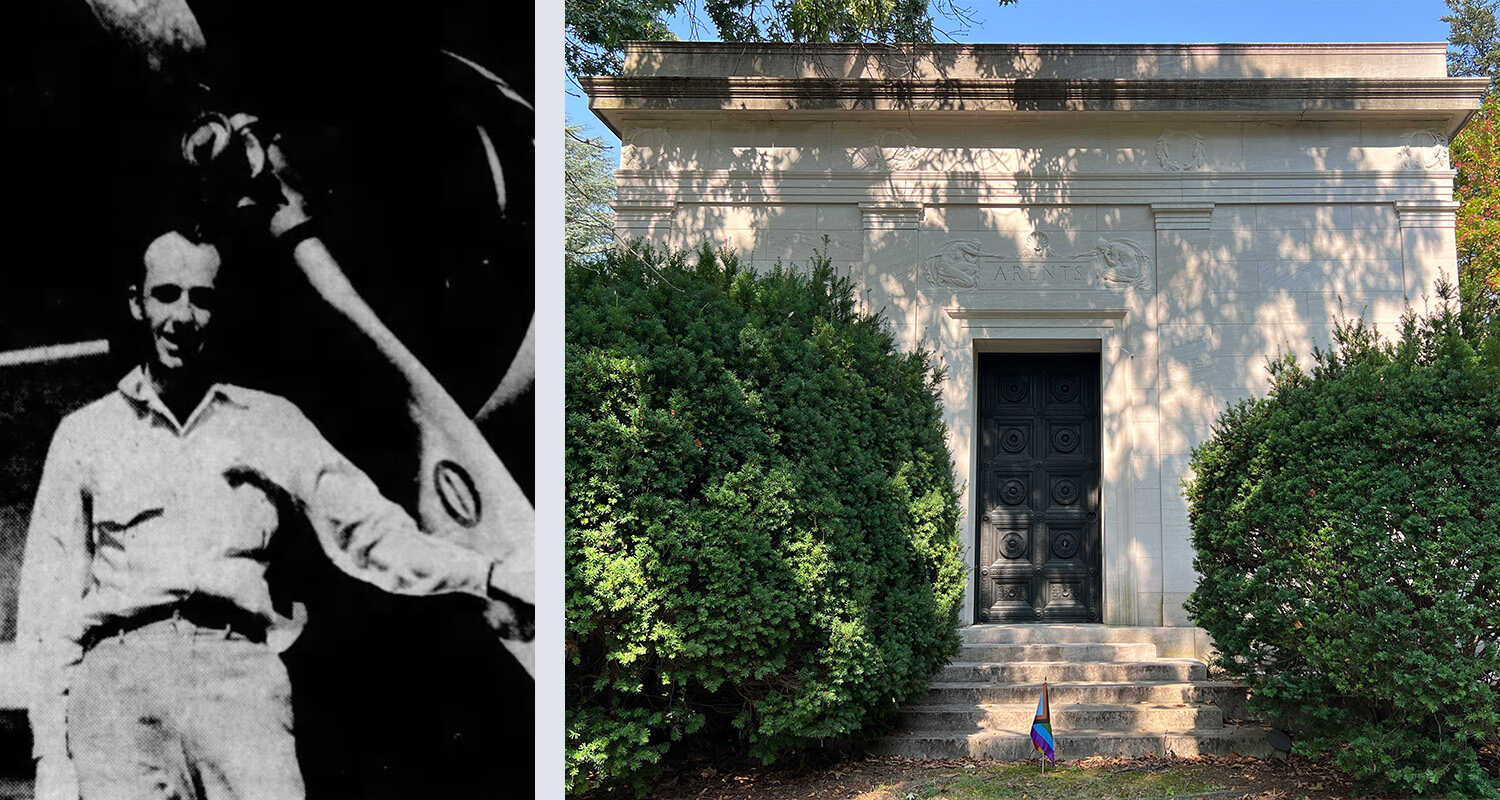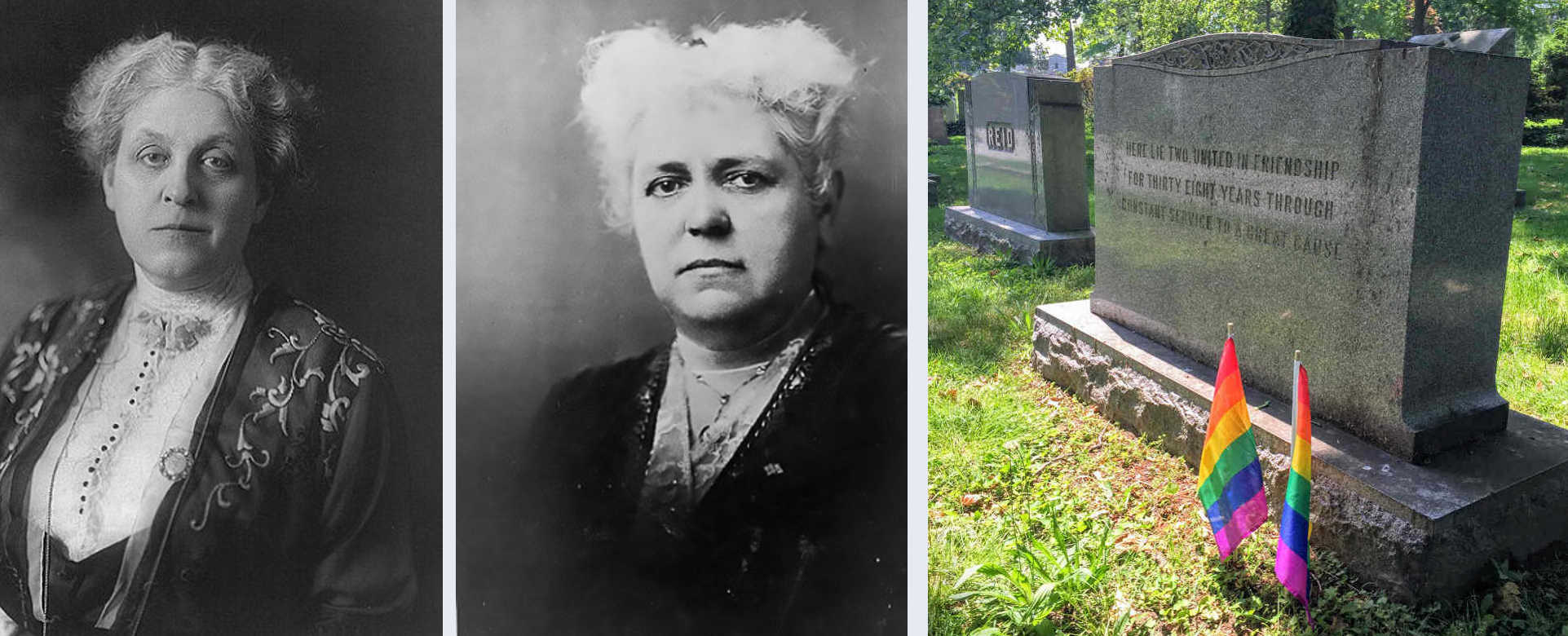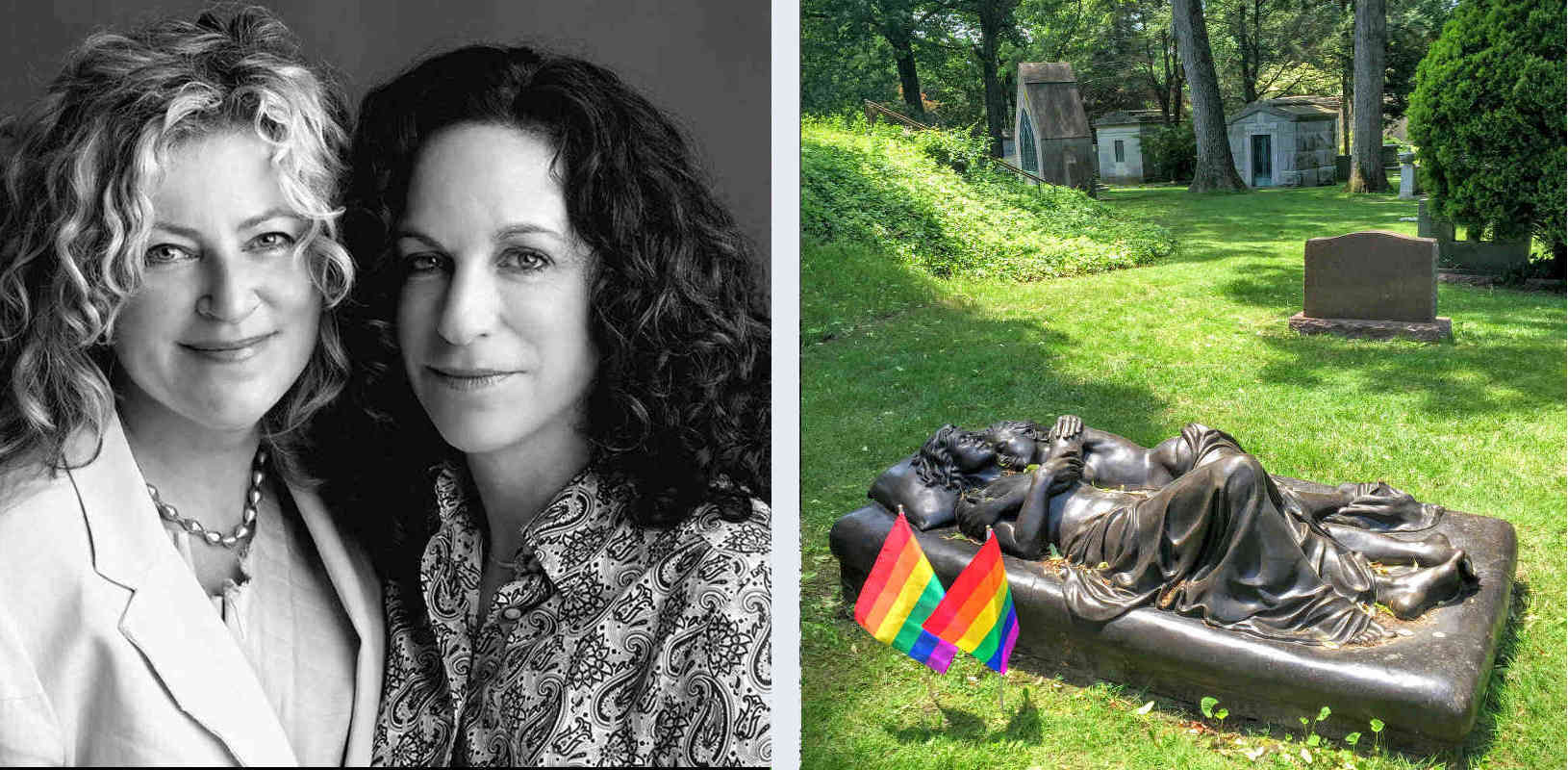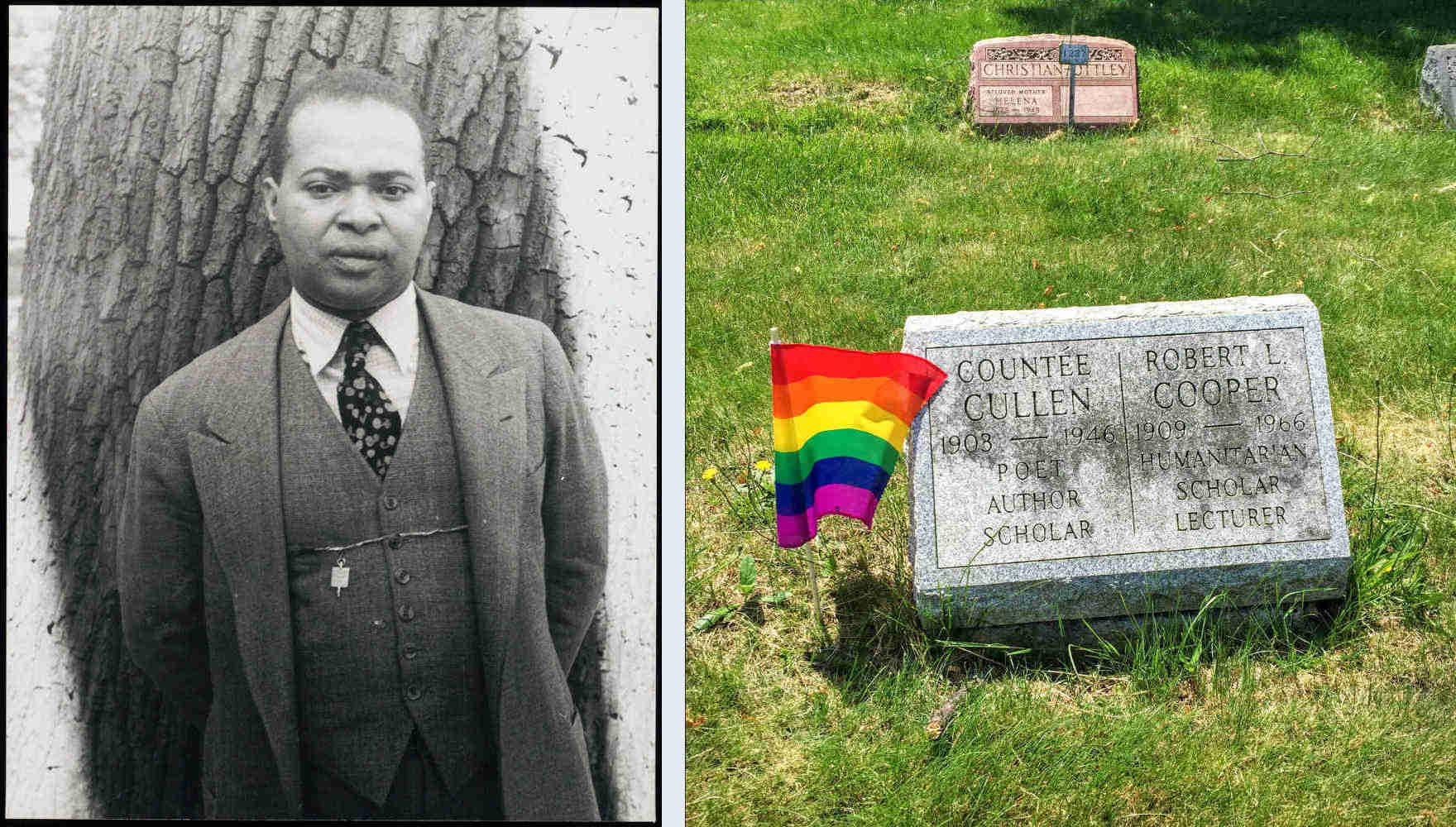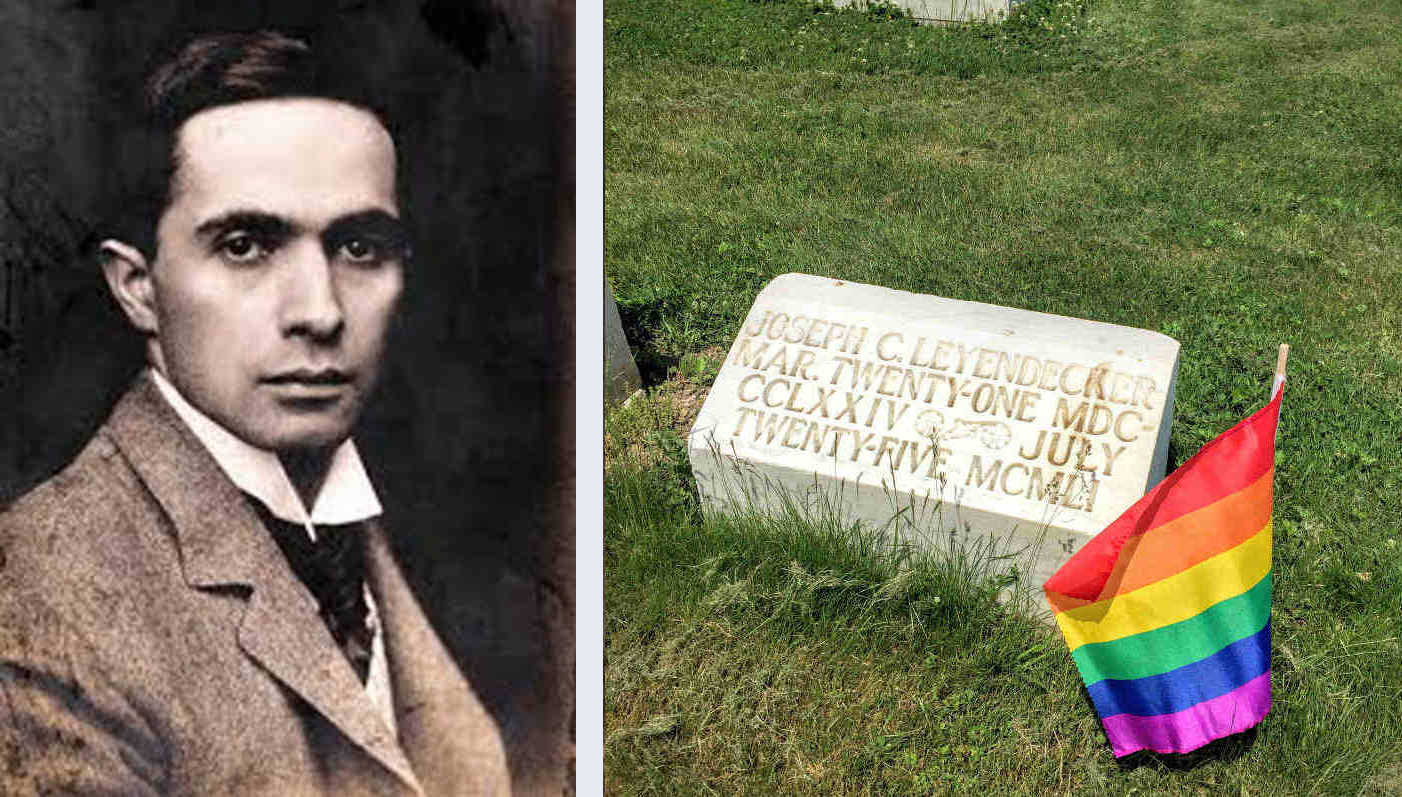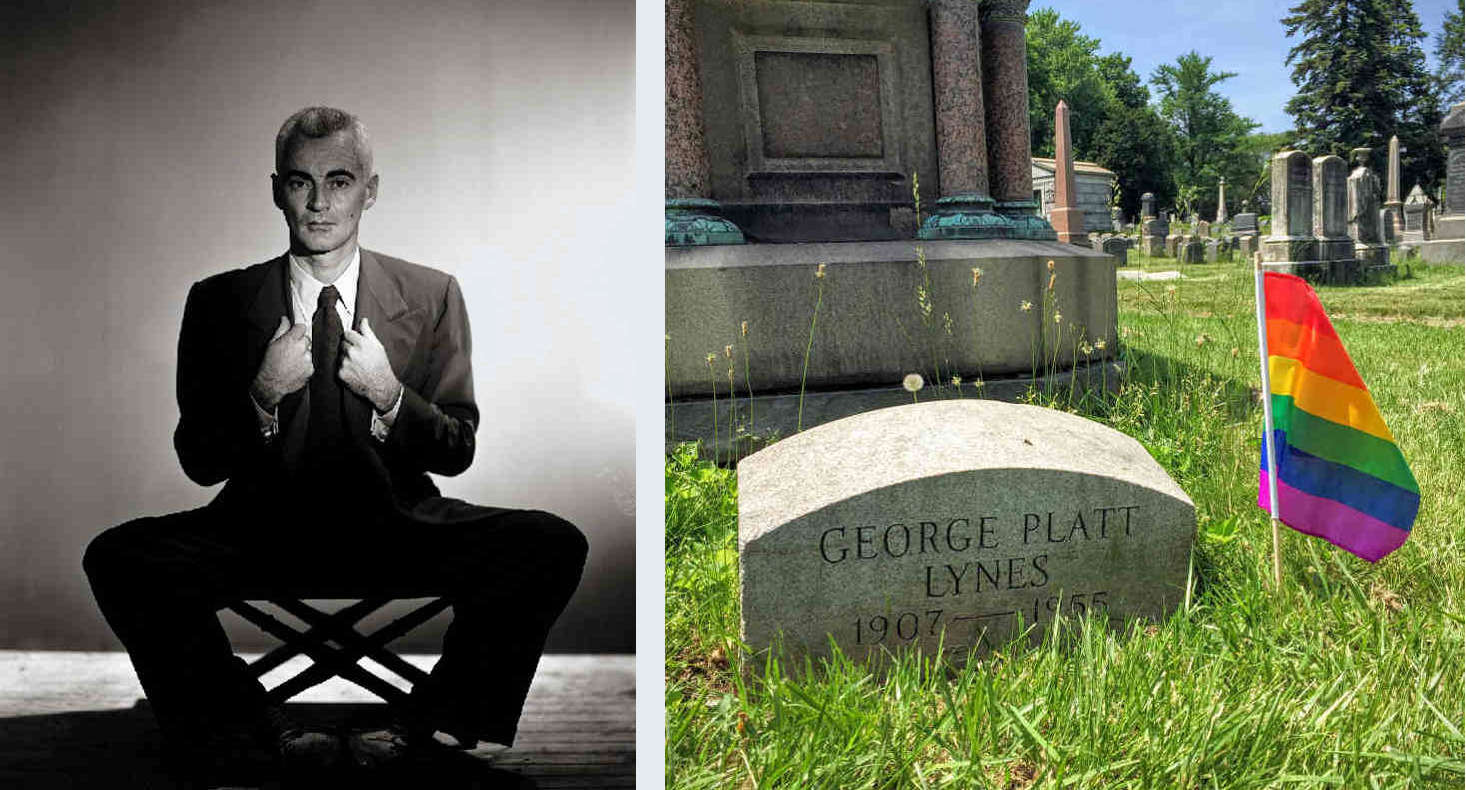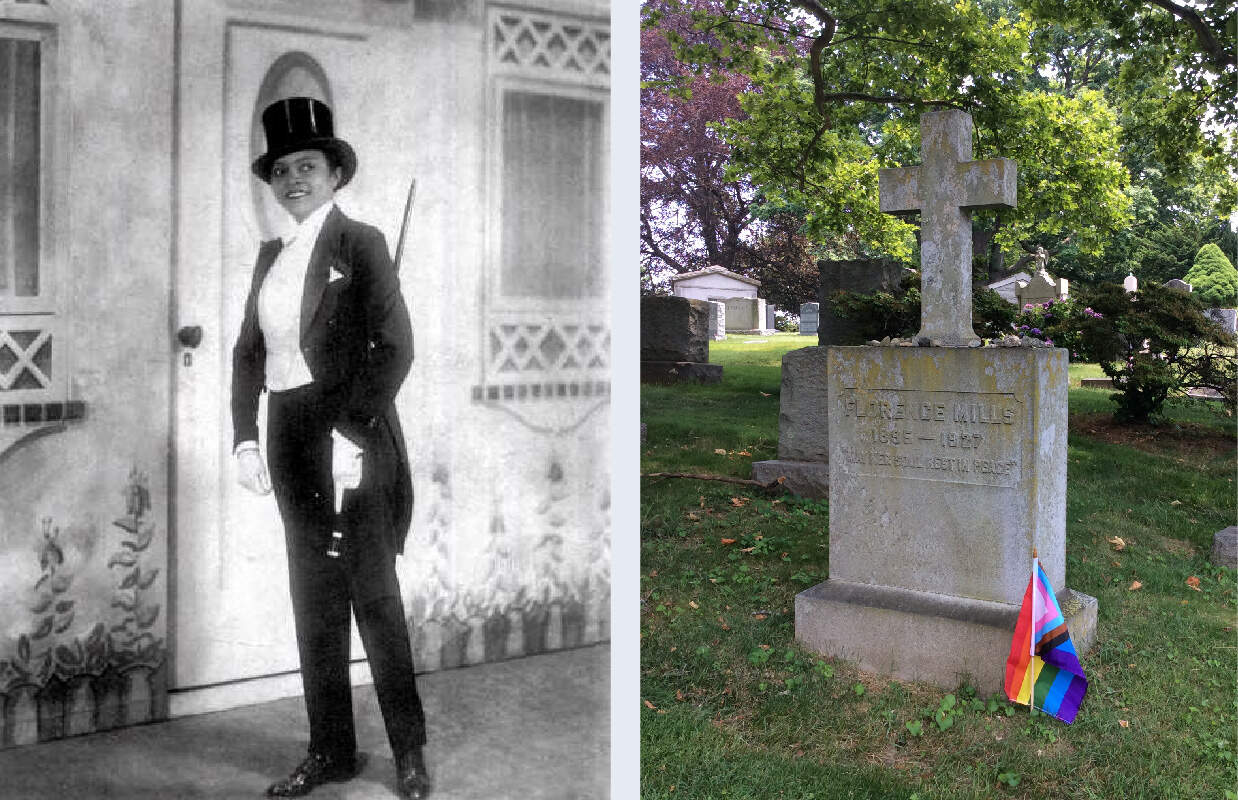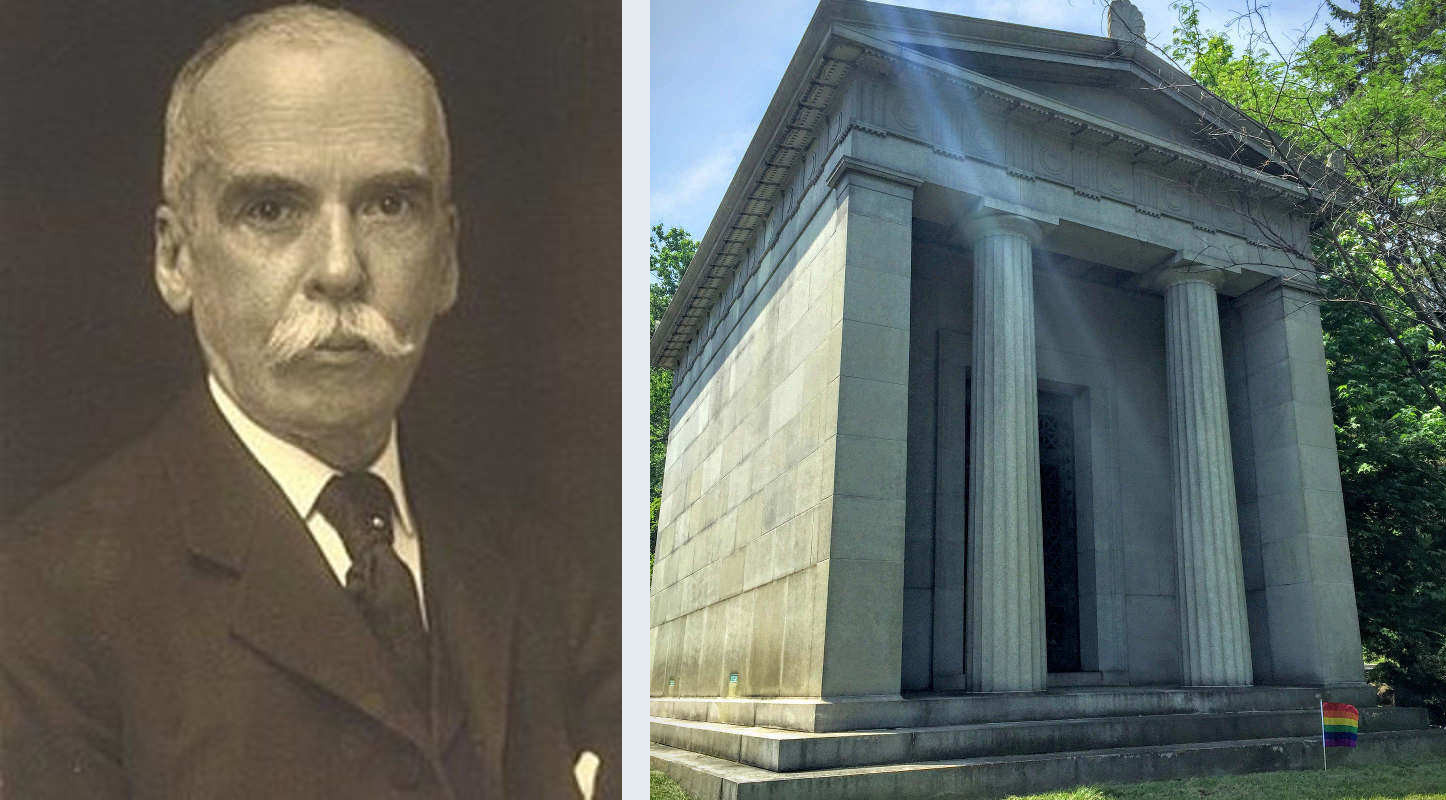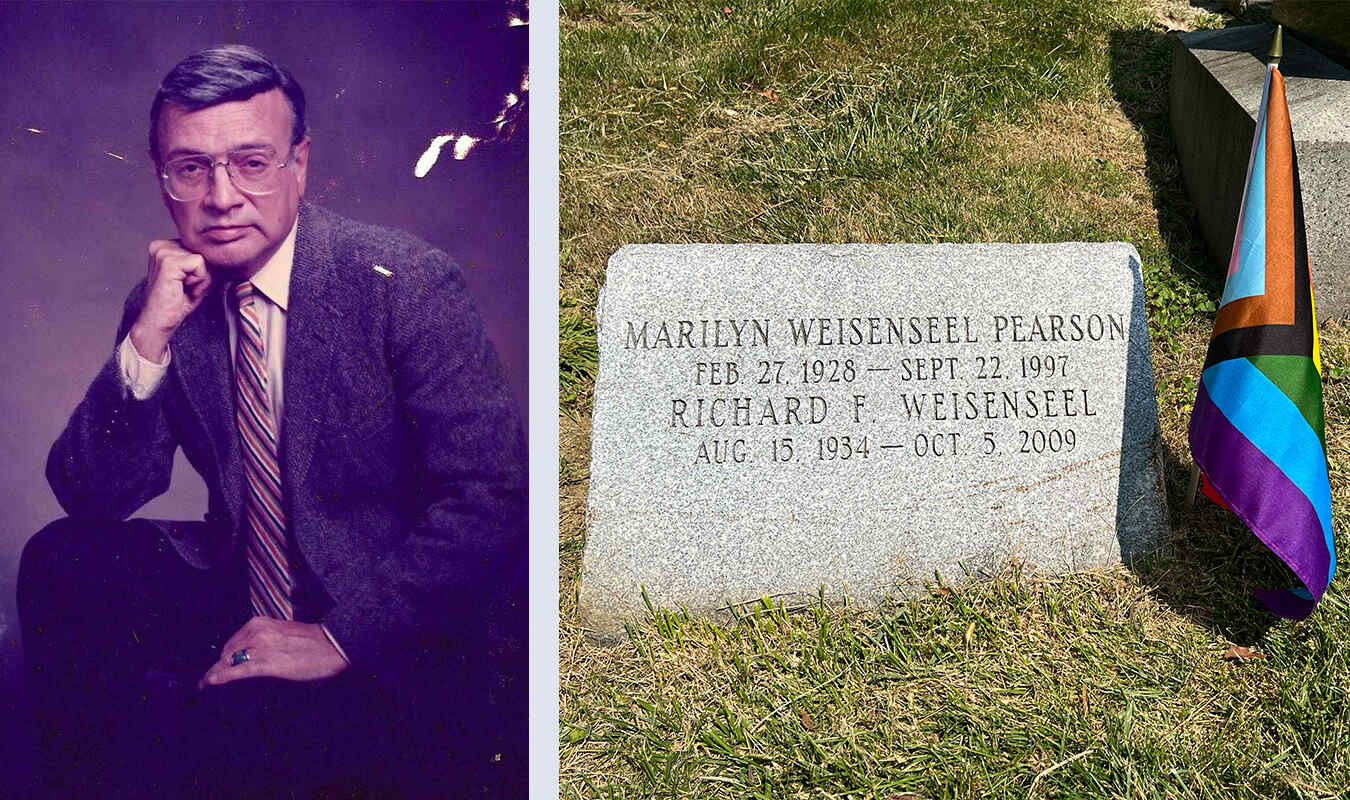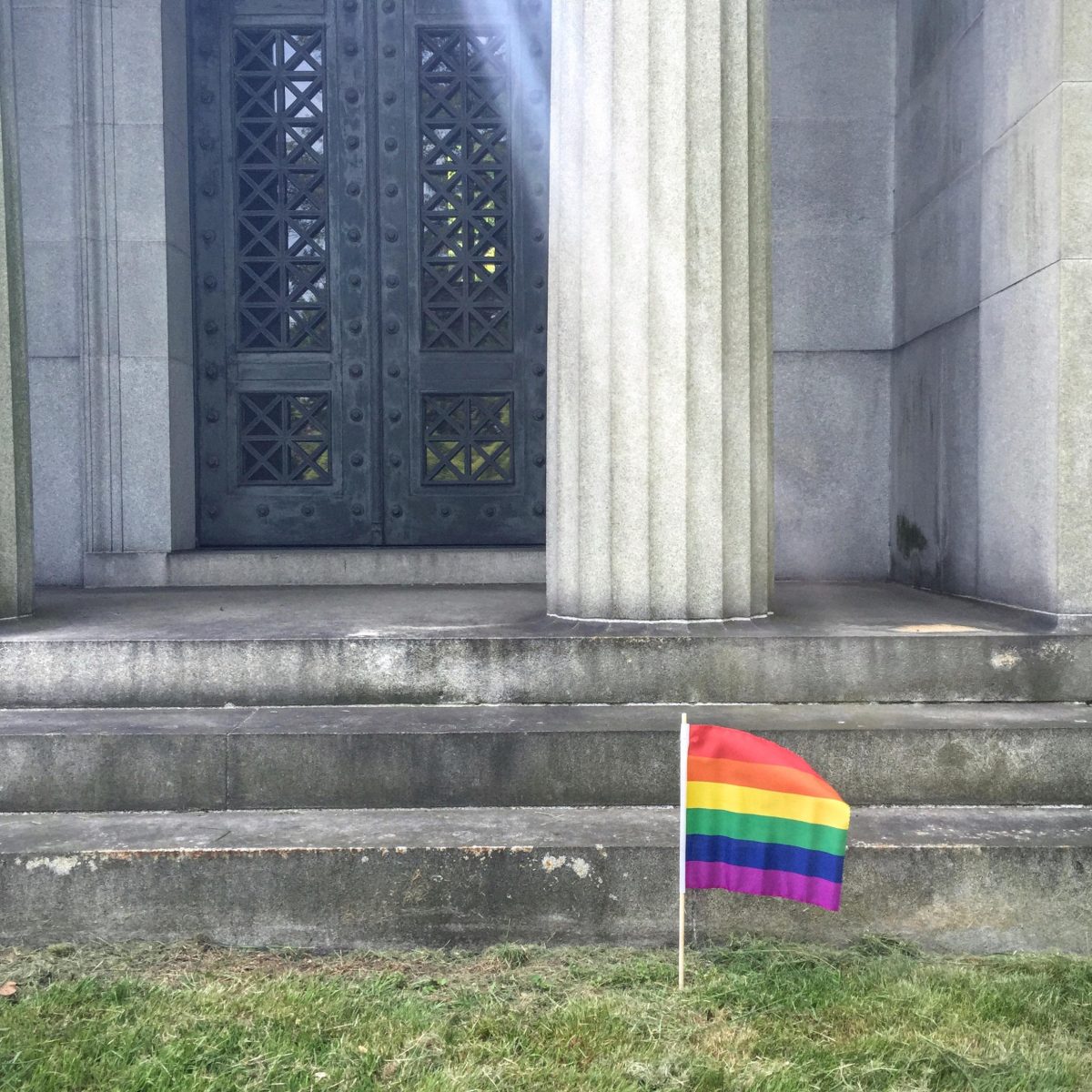
Woodlawn Cemetery
overview
Woodlawn Cemetery in the northern Bronx is not only a magnificent park-like landscape, but is the final resting place of many notable figures in the history of the United States.
Influential LGBT people include Carrie Chapman Catt, Countee Cullen, Malvina Hoffman, and George Platt Lynes.
History
Woodlawn Cemetery was founded in 1863. Many LGBT individuals have been interred here, including these well-known figures:
George Arents III (1916-1992) was heir to a large tobacco fortune established by his grandfather, a founder of the American Tobacco Company. Arents III was an avid race car driver who was the American franchisee for Ferrari and successfully raced several of these Italian cars. He was a founder of the North American Racing Team (NART) with Ferrari importer Luigi Chinetti and Jan de Vroom. He lived in a mansion in Coral Gables, Florida, where he entertained his gay friends. According to Mattachine Society of Florida founder Richard Inman, Arents was closeted but often helped fund Mattachine publications and mailings. Arents’ partner was racing driver David Cunningham. Arents is interred in his family’s grand mausoleum.
Jay Brennan (1882-1961) and Bert Savoy (1888-1923) were vaudeville stars who were buried near each other. In the 1910s and early 1920s, they were a well-known musical comedy duo, in which Brennan was the “straight” man and Savoy was the comedic “female impersonator.” They performed as the Society Jesters in the mid-1910s and also appeared in such acts as Passing Show (1915), Ziegfeld Follies of 1918, and Greenwich Village Follies (1922). According to drag lore, Savoy’s walk and manner was later borrowed by actress Mae West.
Carrie Chapman Catt (1859-1947) and Mary Garrett Hay (1857-1928) were leading suffragists. They were buried together at Catt’s request. Their gravestone reads:
Here lie two united in friendship for thirty eight years through constant service to a great cause.
Catt became president of the National American Woman Suffrage Association in 1900 and led the women’s movement in its final push for voting rights. Hay’s efforts in organizing parades and street rallies helped pass the New York suffrage amendment in 1917.
Patricia Cronin (1963-) and Deborah Kass (1952-) are life partners and artists who are the subjects of Cronin’s sculpture “Memorial to a Marriage, the only monument at Woodlawn that overtly memorializes gay love. It was installed in marble in 2002 before same-sex marriage was legal. In 2011, the marble was replaced with a bronze version. The sculpture depicts the couple in a loving embrace. (Kass’s most famous work is the 16-foot bright yellow aluminum sculpture that reads OY or YO depending on how it is viewed.) This will be Cronin and Kass’s final resting place; both are still living.
Countee Cullen (1903-1946) was a renowned African-American poet and leading figure of the Harlem Renaissance. He was also a teacher at Frederick Douglass Junior High School (now known as Frederick Douglass Academy) in Harlem, where future author and activist James Baldwin was one of his students.
Ignacio de la Torre y Mier (1866-1918) was a wealthy Mexican landowner who was active in Mexican politics. He was married to the daughter of President Porfirio Diaz, although his wife lived in a separate wing of their Mexico City mansion and de la Torre was known for his parties with other men. De la Torre is reputed to have had an affair with bisexual Mexican revolutionary hero Emiliano Zapata. He fled Mexico after a failed assassination attempt on President Francisco Madero, in which he was implicated, and died in New York.
Diane Delia (1957-1981) was born John Delia in New York. Delia became a drag artist after high school, impersonating Diana Ross. While still identifying as male, he had an affair with one Robert Ferrara. In 1979, Delia met Robyn Arnold, a nurse, who helped fund gender affirmation surgery. She took the name Diane in honor of Diana Ross. Diane and Ferrara married, but in 1981, Ferrara and Arnold allegedly drove Delia into the woods and each shot her twice in the head. The trial received a great deal of prurient publicity in the local press. Only Ferrara was convicted.
James Paul Donahue, Jr. (1915-1966) was an heir to the fortunes established by his maternal grandfather, five-and-dime store founder F. W. Woolworth, and his father, James Paul Donahue, Sr., founder of the Retail Butchers’ Fat Rendering Company. Donahue, Jr. lived a lavish, socially well-connected lifestyle. He was well-known as a playboy who had many gay relationships. The exception was his reputed four-year affair with Wallis Simpson, the Duchess of Windsor. He died from alcohol and barbiturate poisoning that his friends believed was a suicide over an unrequited gay love. He is interred in his grandfather’s monumental Egyptian style mausoleum.
Clyde Fitch (1865-1909) was a prolific playwright who wrote 62 plays in 19 years and was considered the most popular playwright on Broadway at the turn of the 20th century. His best known play was Beau Brummell, a vehicle for Richard Mansfield. Fitch is said to have had a brief affair with Oscar Wilde, who influenced his own work.
Kenneth (Ken) Harper (1939-1988) became one of the first successful Black Broadway producers with The Wiz (1975), a musical that he conceived as a Black reinterpretation of The Wizard of Oz. Despite poor initial reviews, The Wiz played 1,672 performances, won the Tony award for best musical, and was revived in 2024. It was turned into a hit movie, for which Harper served as executive producer. Harper died of AIDS-related complications at the age of 48 while working on a Japanese-inspired musical called Bamboo.
Malvina Hoffman (1887-1966) was the country’s most renowned female sculptor in the 1930s. Some of her sculptures can be found at the New-York Historical Society and the Bronx Hall of Fame. Mercedes de Acosta claims to have had an intimate relationship with Hoffman.
J.C. Leyendecker (1874-1951) and Francis X. Leyendecker (1876-1924), who were brothers, were important early 20th century illustrators. J. C. created over 300 covers for The Saturday Evening Post (including his invention of a baby as a New Year’s symbol) and rivaled Norman Rockwell in the field of magazine illustrations. He also illustrated commercial advertising, notably the famous images of the Arrow Collar Man, many of which depict his partner Charles Beach (who is not buried at Woodlawn). J.C. is buried alongside his brother, F.X., who was also a successful magazine illustrator.
George Platt Lynes (1907-1955) was a noted commercial and fashion photographer. He achieved fame after photographing notable writers, including Jean Cocteau, Gertrude Stein, Colette, and Andre Gide, and the George Balanchine/Lincoln Kirstein ballet companies which became the New York City Ballet. Privately, he produced a substantial collection of male nude and homoerotic photographs, many of which were acquired by the Kinsey Institute.
Elisabeth Marbury (1856-1933) was one of the world’s leading, and pioneering female, theatrical agents and producers, a literary agent, and partner of decorator Elsie de Wolfe (who is not buried here). Marbury’s clientele included Oscar Wilde, W. Somerset Maugham, Sir James Barrie, Clyde Fitch, and Jerome Kern. Beginning in the 1890s, the couple held popular Sunday salons at their 122 East 17th Street residence.
Roi Cooper Megrue (1883-1927) began his theatrical career working for Elisabeth Marbury. He became a prolific playwright and director, and directed the first Pulitzer Prize-winning play, Why Marry?, which he also co-produced. Megrue was close friends with Clyde Fitch and even caricatured Fitch in his all-male operetta The Isle of Illusia.
Herman Melville (1819-1891) was a celebrated 19th century author who was born and later died in New York City. Though married to a woman, Melville has been the subject of discussion among scholars of LGBT history, such as Jonathan Ned Katz in Gay American History (1976) and Rictor Norton in My Dear Boy: Gay Love Letters Through the Centuries (1998). Melville’s personal letters and writings reveal an infatuation with author Nathaniel Hawthorne, with whom he had an intimate friendship, according to Katz. Homoerotic themes appear in his works Typee (1846), Omoo (1847), Mardi (1849), Redburn (1849) White Jacket (1850), Moby-Dick (1851), poems published in the 1870s, and Billy Budd (1891). The “A Squeeze of the Hand” chapter in Moby-Dick is referred to by Katz as “no doubt one of the most erotically suggestive scenes of male-male intimacy in American literature.” Melville’s first homoerotic written works are extraordinarily early for an American writer, pre-dating the “Calamus” poems in the 1860-revised edition of Leaves of Grass, written by Walt Whitman.
Florence Mills (1896-1927), known as the “Queen of Happiness,” was one of the most popular African-American entertainers in the 1920s before her untimely death at the age of 31. When Mabel Hampton was asked if Mills was gay, she responded, “Yeah, all of them girls were. Every last one of them. They didn’t call it ‘gay’–I don’t know what they called it–but all of them was one of those.”
Ada “Bricktop” Smith (1894-1984) was a famed African American singer known as “Bricktop,” in reference to the red hair that she inherited from her maternal Irish grandfather. According to Noel Coward, she was a “peerless and witty” singer. For years, her club Chez Bricktop was a leading venue of café society in Paris and later in Rome and Mexico City. Born in West Virginia, she grew up in Chicago and began touring at the age of 16. In Paris, she had a love affair with renowned entertainer Josephine Baker. Cole Porter frequented her Paris club and wrote the song “Miss Otis Regrets” for her. In 1929, Bricktop married saxophonist Peter DuCongé. They soon separated but never divorced, thus her married surname appears on her tombstone.
John W. Sterling (1844-1918), a founder of the Shearman & Sterling law firm and the donor of the Sterling Memorial Library to Yale, built a large mausoleum at Woodlawn. In his will he stipulated that no one be placed in the mausoleum except for his sister and James O. Bloss, who, his will stated “has lived with me for more than forty years, should he desire to be interred in the said Mausoleum and should die without ever having been married.” Sadly, Bloss, who died shortly after Sterling, is not interred here; he is buried at Mount Hope Cemetery in Rochester, New York.
Ted Straeter (1913-1963) full name Theodore (Ted) Anthony Straeter, was a prominent pianist from the 1930s to the 1950s. As a child prodigy in St. Louis, he was known as the “12-Year-Old Wonder.” After moving to New York in 1935, Straeter worked briefly in Tin Pan Alley and soon became the pianist for Rogers & Hart’s Jumbo. The musical’s popular number “The Most Beautiful Girl in the World” became Straeter’s theme song; a recording sold over one million copies. He went on to become a society pianist, playing regularly at the Plaza Hotel’s Persian Room and the Savoy Hilton. He had what was known as a “whispery” vocal style. He and his Society Dance Orchestra recorded many albums in the 1950s.
William Matheus Sullivan (1885-1947) and Arcie Lubetkin (1887-1955) were partners who were buried together. Sullivan was a lawyer and opera patron and Lubetkin was an interior decorator. Sullivan was the attorney for the Metropolitan Opera and also represented many opera singers. At his death, Sullivan established the William Matheus Sullivan Musical Foundation to further the careers of young American opera singers. Lubetkin was one of Sullivan’s executors.
Laurette Taylor (nee Helen Loretta Cooney, 1884-1946) was a legendary stage actress who became famous for her first big Broadway hit Peg O’ My Heart (1912-14 and 1921), written by her then-husband J. Hartley Manners. After years away from the stage, in part due to alcoholism, she made a spectacular comeback as the original Amanda Wingfield in Tennessee William’s The Glass Menagerie (1945-46). She is reputed by various writers to have had affairs with a number of famous actresses and prominent women.
Richard Weisenseel (1934-2009) was born in New York City and was a graduate of the High School of Performing Arts. He moved to Chicago where he became a successful advertising executive. Weisenseel was an active supporter of LGBT organizations in Chicago, including two primarily LGBT theater groups — the About Face Theatre and Hell in a Handbag Productions; the AIDS Foundation of Chicago; and the LGBT social service organization Center on Halsted. Weisenseel was in a 52-year relationship with Richard Pope, who is not buried here.
Matthew Wright (1980-2015) was a basketball player who played for the University of Arizona and was then drafted by the New York Knicks. Instead of joining the Knicks, Wright moved abroad and played for professional teams in Poland, Spain, Israel, South Korea, Turkey, and France. In 2015, he was found dead in his car in Brooklyn, murdered by men who, it is believed, he met on Grindr.
There are many other members of the LGBT community buried at Woodlawn. If you know of anyone, please let us know so that we can remember them here.
Entry by Andrew S. Dolkart, project director (March 2017; last revised September 2024), with thanks to Matthew Rosenberg for generously contributing his research on LGBT individuals buried at Woodlawn.
NOTE: Names above in bold indicate LGBT people.
Building Information
- Architect or Builder: various landscape architects
- Year Built: beginning in 1863
Sources
Charles D. Warren, Carole Ann Fabian, and Janet Parks, eds., Sylvan Cemetery: Architecture, Art & Landscape at Woodlawn (New York: Avery Architectural & Fine Arts Library/The Woodlawn Conservancy, 2014).
Eve Golden, “Queen of the Dead: Bert Savoy,” The Daily Mirror, October 30, 2012, bit.ly/2CB7u7d.
James F. Wilson, Bulldaggers, Pansies, and Chocolate Babies: Performance, Race, and Sexuality in the Harlem Renaissance (Ann Arbor: University of Michigan Press, 2010).
Jonathan Ned Katz, Gay American History (Springfield, OH: Crowell, 1976).
Rictor Norton, My Dear Boy: Gay Love Letters Through the Centuries (San Francisco: Leyland Publications, 1998).
Susan Olsen, Director of Historical Services, The Woodlawn Cemetery.
Do you have more information about this site?
This project is enriched by your participation! Do you have your own images of this site? Or a story to share? Would you like to suggest a different historic site?
